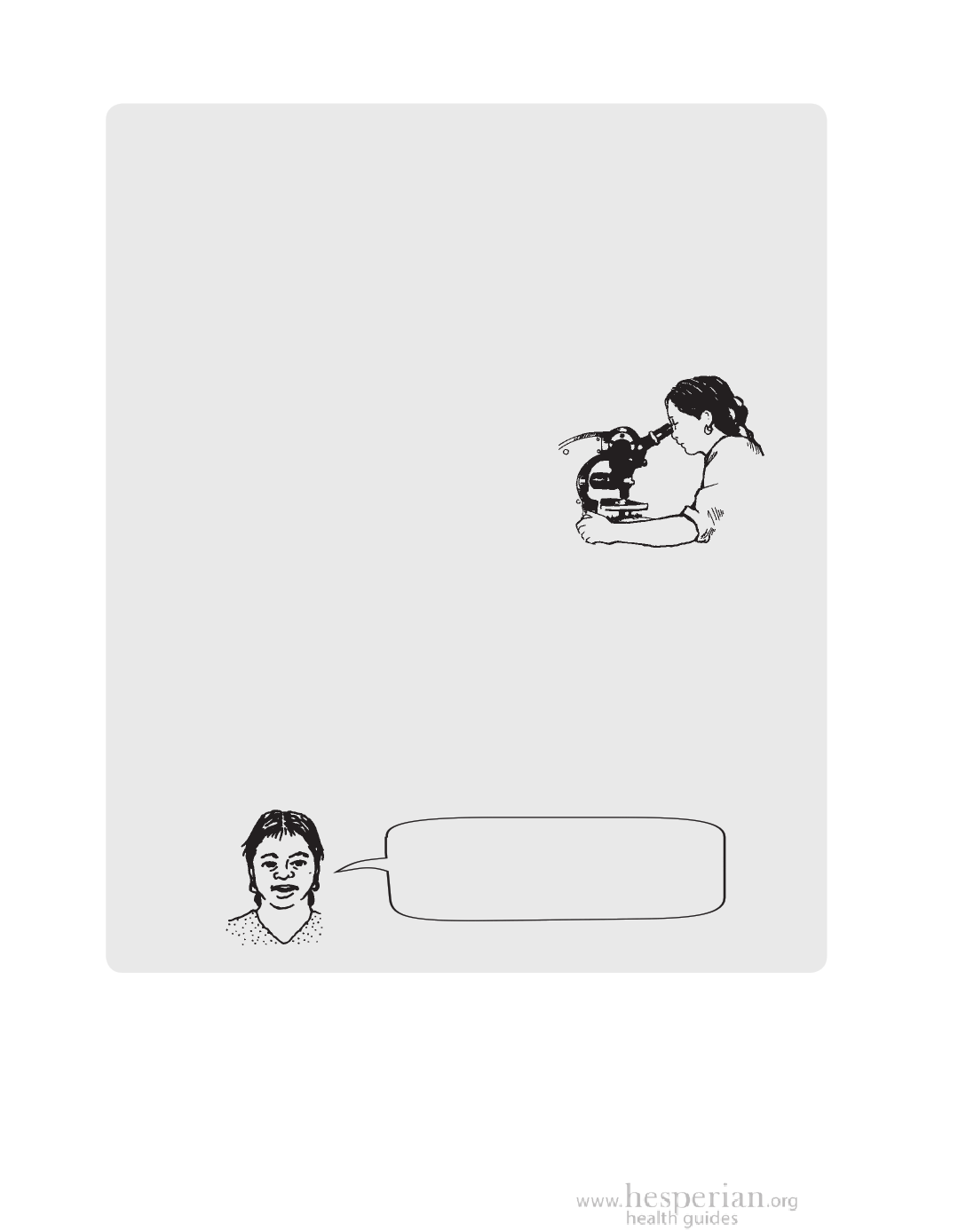
504 Oil, Illness, and Human Rights
7. We searched for funding for our work and the laboratory costs.
We formed a commission to find the money. After a lot of searching, we
got money for the study from a group of doctors in Spain.
8. We made maps of the communities.
People from each of the communities made maps showing oil wells, polluted
water, and locations of villages and farms. At the same time we made a list
of all the people who live in each community (a census). The list included
each person’s name, age, and whether they were a man or a woman.
9. We began visiting the communities and doing the study.
Instead of sending samples to the city, we set up a lab in the community
school where we tested people’s blood, urine,
and feces. (You need lab equipment and
some training to do these tests, so we won’t
explain them here.) In the mornings we went
from house to house collecting the samples.
Afterwards, another group went to each
house doing surveys to gather information
and the health promoters did a medical
check-up of each person.
10. Once we finished gathering all of the information, we put it in order.
Then we compared information from the polluted communities and
the communities that were not polluted. We compared many things
— the economic situation, the political situation, the local culture, and
above all, people’s health.
11. The last step was to write it all down and discuss it together.
This helped all of the communities involved to decide how to take
action to improve our health.
On the last day in each town or village,
we had another meeting with the
community about what we would do
next and what more we hoped to learn.
A Community Guide to Environmental Health 2012